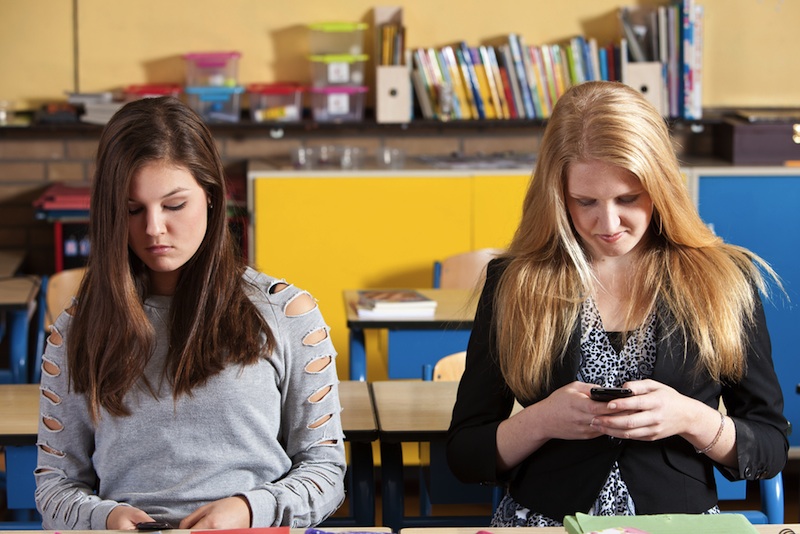Teens Irked by Sexting, Do It Anyway

Teenagers overwhelmingly say they're irritated when asked to "sext" nude pictures of themselves to other teens, but nearly 30 percent have done so anyway.
A new study of 948 14- to 19-year-olds in southeastern Texas finds that sexting is common among this age group. The numbers outpace other estimates of teen sexting. The study also finds that teen sexters are more likely to report being sexually active than their non-sexing counterparts, and that in girls, at least, sexting is linked to risky sexual behaviors.
Sexting is the practice of sending explicit words or pictures via text messaging. As handheld mobile devices have become more common, teens have increasingly used them for sexting, but exact numbers are hard to pin down. A study of private-school students in the U.S. Southwest found that nearly 20 percent of high-school students had ever sent an explicit image via their cellphone. Twice as many had received an explicit photo via cellphone.
In 2009, a Pew Internet and American Life survey pegged the number of sexting teens at about 15 percent (though only 4 percent had sent photos themselves). In 2011, a national study of 10- to 18-year-olds found that only about 1 percent of this age group created their own sexually explicit images. When the researchers broadened the question to include receiving images, the number jumped to 9.6 percent.
High rates of sexting
The new study focused on seven high schools in Texas. In this sample, 28 percent of teens had ever sent nude pictures of themselves through electronic means. Thirty-one percent had asked for a nude picture to be sent to them, and 57 percent had been asked.
"It appears that sexting is a modern version of 'show me yours and I'll show you mine,' but the commonness of the behavior does not condone its occurrence. On the contrary, we found that teens are generally bothered by being asked to send a naked picture," study author Jeff Temple, a professor of obstetrics and gynecology at the University of Texas Medical Branch at Galveston said in a statement. "In fact, nearly all girls were bothered by having been asked, and among boys, more than half were bothered at least a little."
Sign up for the Live Science daily newsletter now
Get the world’s most fascinating discoveries delivered straight to your inbox.
Teens who sexted were more likely to be engaging in real-life sexual activities, the researchers reported Monday (July 2) in the journal Archives of Pediatrics and Adolescent Medicine. For teen girls, texting was a red flag for particularly risky sexual behaviors, such as using drugs or alcohol before sex or having multiple partners. [10 Surprising Sex Statistics]
It may be that for boys, sexting is seen as normal and positive, Temple said. Girls who sext may face a stigma of promiscuity or sluttiness, he said, so risking their reputation by sending nude texts may be a sign that they're willing to take other risks as well.
Because teen sexting involves sending sexually explicit images of minors, it can technically be prosecuted under child pornography laws. Temple said that his team's findings suggest that's a bad idea.
"If our findings were extrapolated nationally, under most existing laws several million teens would be prosecutable for child pornography or other sexual crimes," he said. "Doing so not only unjustly punishes youthful indiscretions, but minimizes the severity and seriousness of true sexual assault against minors. Resources currently used to criminally punish teen sexting could instead be diverted to prevention and education programs focusing on reducing risky sex behaviors among adolescents."
Follow Stephanie Pappas on Twitter @sipappas or LiveScience @livescience. We're also on Facebook & Google+.

Stephanie Pappas is a contributing writer for Live Science, covering topics ranging from geoscience to archaeology to the human brain and behavior. She was previously a senior writer for Live Science but is now a freelancer based in Denver, Colorado, and regularly contributes to Scientific American and The Monitor, the monthly magazine of the American Psychological Association. Stephanie received a bachelor's degree in psychology from the University of South Carolina and a graduate certificate in science communication from the University of California, Santa Cruz.










